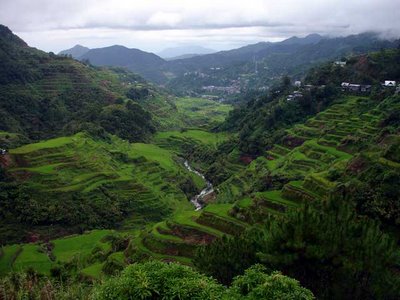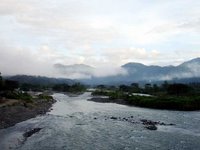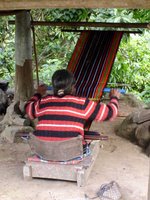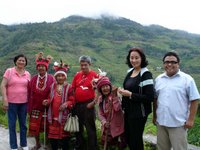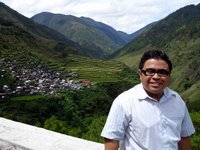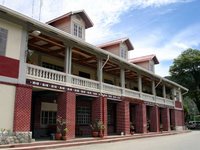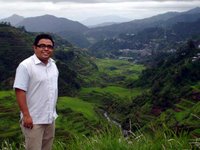
The Batad Rice Terraces are among the most spectacular of the Ifugao Rice Terraces. And aptly so since it's one of the five rice terrace clusters inscribed in the UNESCO World Heritage List under Rice Terraces of the Philippine Cordilleras. The other four are Bangaan, Hungduan, Mayoyao and Nagacadan. I've see the first three. And finally, I've been able to trek to Batad! Which leaves just Nagacadan on my list of rice terraces to visit.
We took the late evening bus to Banaue and arrived early the next morning. As soon as we arrived, we purchased our bus tickets home since demand is really high and we wanted to make sure we had our tickets back. For more information on getting there, read How to get to and from Banaue, Ifugao.
We then proceeded to the Banaue Hotel, the best accommodation in Banaue, where we stayed for the night. I spent the rest of the day catching up on sleep so that I'd have the energy to trek the next day. I actually spent the whole time at Banaue Hotel where I had all my meals, including the buffet dinner, since I was just too exhausted to go out.

Banaue Hotel is one of two places where you can hire accredited jeeps and guides at fixed rates. Be careful dealing with unaccredited guides and transportation since there have been not so nice stories from guests that were cheated or abandoned. The jeep to the Batad Saddle costs Php2500 while the guide fee is Php900.
The trip to the Batad Saddle was about an hour and thirty minutes. Unfortunately, it had been rainy the past few days. And since the road to the Batad Saddle is quite bad, when it rains, it can become impassable to vehicles. So we had to get off our jeep and walk a few more hundred meters up to the Batad Saddle.

Good thing, it's mostly downhill to the Batad Rice Terraces from the Batad Saddle. It takes another hour of trekking to get to Batad. I noticed the road was being widened and it seemed like they were building a road all the way to Batad Village.
One thing which is sad about Ifugao is that despite the fact it's one of the provinces most visited by foreign tourists, the roads are still bad. Maybe because foreigners don't vote? Well, it's part of the experience I guess. But the rice terraces deserve better roads. But it must come with stringent development safeguards to ensure that the rice terraces outside Banaue are protected and preserved even when infrastructure to get there is improved, so that they don't suffer the fate of Banaue.
At the entrance to Batad Village is a tourist information booth where visitors log and pay a donation to the community. It also offers a really great view of the Batad Rice Terraces. While many visitors stay overnight, we had to rush back to Banaue to catch our bus back to Manila. So after having lunch at Simon's Place (I had the Batad version of pizza), we made our trek back up. And that's the hard part!
But I did make it up in one piece and we finally got on board our jeep for the bumpy trip back to Banaue. We had about two hours to spare before our bus left, just enough time to freshen up and get a quick snack. Despite that quick stay, the trip to Batad was most worth it.
Where to stay in Batad
The accommodation in Batad is quite basic and not that many. Note also that mobile signal in Batad is close to none. So to book a place, send an SMS/text message and wait for the lodge to respond. Calling them would be difficult. Here's a list of places to stay in Batad Village:
Hillside Inn +63 (929) 1268340
Kadangyan Homestay +63 (920) 4686307
Ramon's Homestay +63 (929) 6124423
Rita's Mountain View Inn +63 (910) 8423076
Simon's Viewpoint Inn +63 (930) 5077467
Batad Pension +63 (921) 7371745
Cristina's Main Village Inn +63 (906) 9773771
For some activities in the area, you can visit some of my previous posts on Banaue, Hungduan, and Mayoyao. And here's a list of Banaue hotels and budget accomodation.
Banaue Hotel and Youth Hostel
+63 (74) 3864087 / 3864088
























